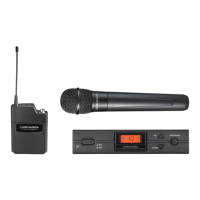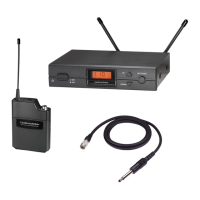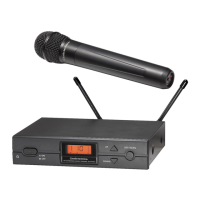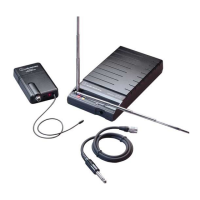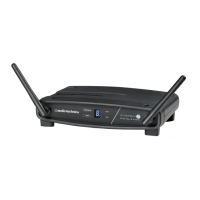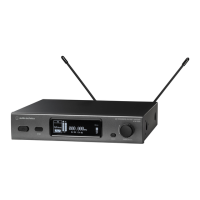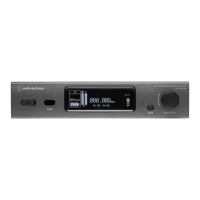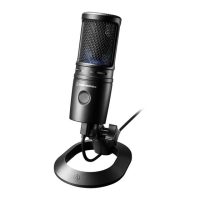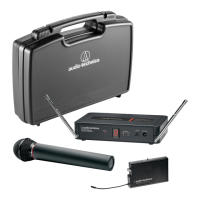Receiver Installation
3
Location
For best operation the receiver should be at least 3 ft. (1 m)
above the ground and at least 3 ft. away from a wall or metal
surface to minimize reflections. The transmitter should be at
least 3 ft. from the receiver, as shown in Figure A. Keep
antennas away from noise sources such as digital equipment,
motors, automobiles and neon lights, as well as away from
large metal objects.
Output Connections
There are two audio outputs on the back panel: balanced
(12.5 mV) and unbalanced (25 mV). Use shielded audio cable
for the connection between the receiver and the mixer. If the
input of the mixer is a
1
/
4
" jack, connect a cable from the
1
/
4
"
unbalanced audio output on the back of the receiver housing
to the mixer. If the input of the mixer is an XLR-type input,
connect a cable from the balanced XLR-type audio output on
the back panel to the mixer. The two isolated audio outputs
permit simultaneous feeds to both unbalanced and balanced
inputs. For example, both a guitar amp and a mixer can be
driven by the receiver.
Antennas
Attach the included pair of UHF antennas to the antenna input
jacks. The antennas are normally positioned in the shape of a
“V” (both 45° from vertical) for best reception.
Accessory antennas can be remotely located from the receiver.
However, due to signal loss in cables at UHF frequencies, use
the lowest-loss RF cables practical for any cable runs over 25
feet. RG8-type is a good choice. Use only copper-shielded
cable, not CATV-type foil-shielded wire. Audio-Technica offers
quality RF cables in four lengths, as well as remote antennas;
see the Optional System Accessories section on page 10.
Power Connections
Connect the included AC adapter to the DC power input on the
back of the receiver. Loop the small cord from the DC plug over
the cord hook above the jack, to keep the plug from being
detached by an accidental tug on the cord. Then plug the
adapter into a standard 120 Volt 60 Hz AC power outlet.
Operation of the receiver is controlled by the front-panel Power
switch.
(Note: Units supplied to countries with 230V mains should
include an in-line AC adapter appropriate for that country.
Use the included adapter only with 120V 60 Hz AC
power sources.)
Figure A

